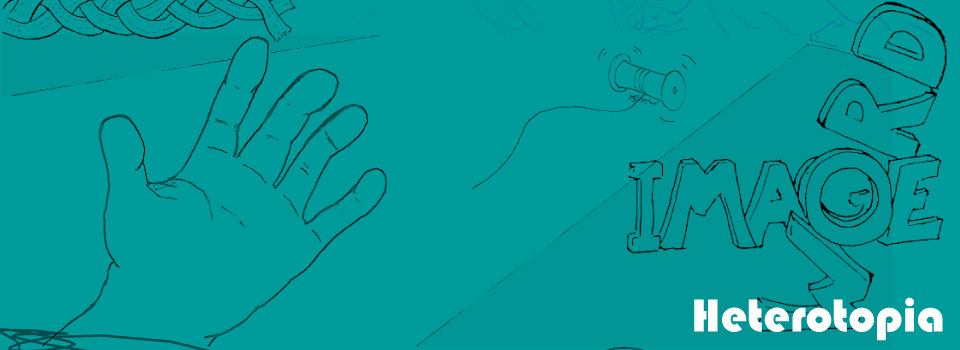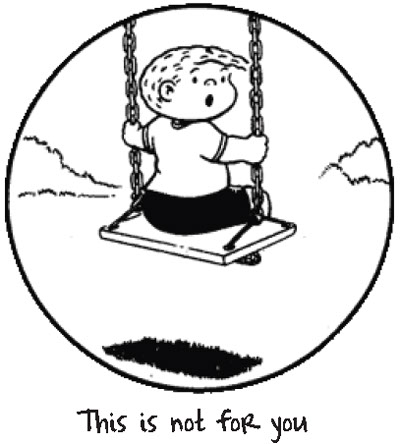
x
Contents
Home
Home
Home
The division between paradigmatic and syntagmatic is often shown on a graph, similar to the difference between metaphor and metonymy. The paradigm is the replaceable, that which is placeholder. The syntagm is the ordered, linear thread. The syntagm constitutes language’s one-dimensional operation. The paradigm opens language into two dimensions through potentiality. Reflexivity then constitutes a third dimension to language. We see this clearly in Glas. The sentence constitutes the first dimension, the layout the second (including both the words used and those unused; paradigm here signifies not just the potential for other words but the position in two-dimensional space of the words we do see), the commentary across the gutter, the third. We might even hypothesize a fourth that reaches across pages (corresponding to Groensteen’s tressage or general arthrology) and even into other texts (intertextuality). It is through the interplay of paradigm and syntagm, linear and spatial, actual and virtual, that a text constructs and deconstructs itself. Paradigm and syntagm are the warp and woof, if you will, of the text.
Lev Manovich has argued that new media favors the paradigmatic over the syntagmatic to some extent: “Interactive interfaces foreground the paradigmatic dimension and often make explicit paradigmatic sets. Yet, they are still organized along the syntagmatic dimension” (232). The design process in new media primarily revolves around choices, utilizing the file/folder metaphor. However, the end result is almost always syntagmatic. Gamers are greeted with paradigmatic choice, but through their own actions collapse the infinite into the finite syntagm of narrative structure.
The only truly open game is the unplayed game. Why is the syntagm unavoidable even in new media? Manovich has an idea:
Why does new media insist on this language-like sequencing? My hypothesis is that it follows the dominant semiological order of the twentieth century—that of cinema. Cinema replaced all other modes of narration with a sequential narrative, an assembly line of shots which appear on the screen one at a time. For centuries, a spatialized narrative where all images appear simultaneously dominated European visual culture; then it was delegated to "minor" cultural forms as comics or technical illustrations. "Real" culture of the twentieth century came to speak in linear chains, aligning itself with the assembly line of an industrial society and the Turing machine of a post-industrial era. New media continues this mode, giving the user information one screen at a time. At least, this is the case when it tries to become "real" culture (interactive narratives, games); when it simply functions as an interface to information, it is not ashamed to present much more information on the screen at once, be it in the form of tables, normal or pull-down menus, or lists. In particular, the experience of a user filling in an on-line form can be compared to pre-cinematic spatialised narrative: in both cases, the user is following a sequence of elements which are presented simultaneously. (232-33)
We should pause for a moment and realize that here comics slip again into the traditional role of “spatialized narrative.” Is this sequential art? Somewhat. The narrative facet certainly is, and the word spatialized reminds us of Spiegelman’s “time represented in space.” However, for Manovich it occupies a space between database and narrative, paradigm and syntagm.
Manovich at first appears ambivalent on the place of spatialized narrative. He wishes to set up a binary between database and narrative, but the spatialized narrative provides a third option, “following a sequence of elements which are presented simultaneously.” Cinema then supplies the split, firmly occupying the position of narrative. Manovich is interested in films that problematize this easy division. He cites Vertov’s Man with a Movie Camera as a multilayered database projected into narration:
The overall structure of the film is quite complex, and on the first glance has little to do with a database. Just as new media objects contain a hierarchy of levels (interface—content; operating system—application; web page—HTML code; high-level programming language—assembly language—machine language), Vertov's film consists of at least three levels. One level is the story of a cameraman filming material for the film. The second level is the shots of an audience watching the finished film in a movie theater. The third level is this film, which consists from footage recorded in Moscow, Kiev and Riga and is arranged according to a progression of one day: waking up—work—leisure activities. If this third level is a text, the other two can be thought of as its meta-texts. Vertov goes back and forth between the three levels, shifting between the text and its meta-texts: between the production of the film, its reception, and the film itself. But if we focus on the film within the film (i.e., the level of the text) and disregard the special effects used to create many of the shots, we discover almost a linear printout, so to speak, of a database: a number of shots showing machines, followed by a number of shots showing work activities, followed by different shots of leisure, and so on. The paradigm is projected onto syntagm. (240-41)
But Manovich’s system is too content based, leaving little room for formal analysis. This “if” of his penultimate sentence signifies a motivated analysis with which I am uncomfortable. Instead, I think we would find a more promising avenue for paradigm in the analysis of the film across layers. At any moment, each of the layers becomes evident to the viewer and the others are hidden. This interplay of presence and absence creates the metatextual. Here we have more than the spatialized narrative; we have the textured text, woven through with significations at once paradigmatic and syntagmatic, metaphoric and metonymic. Nor need we restrict ourselves to film as medium.
Katherine Hayles has extended Manovich’s database analysis to Mark Danielewski’s remediated film House of Leaves and to his complex data-driven poem Only Revolutions to argue that data and narrative are not in conflict (as Manovich argues) but in a productive tension (How We Think 224). This tension leads to new aesthetics and new opportunities for text.
House is of course a text, not a film, but it borrows much from of the cinematic. Danielewski’s father, we must remember, was a filmmaker, while Danielewski himself did sound for the Derrida documentary. Which brings us to Danielewski’s appropriation of Derrida in House. House of Leaves consists of multiple texts within texts. First there is The Navidson Record, a documentary film following a renowned photojournalist who discovers that his new house is haunted by space: it is bigger on the inside than on the outside. Next there is a dissertation entitled House of Leaves, written by a blind man named Zampanò. Our protagonist, Johnny Truant, discovers the dissertation and creates a third text, the one we hold in our hands, by adding notes to Zampanò’s text. Slowly two stories unfold, Navidson’s, as told by Zampanò, and Truant’s, as told through footnotes to Zampanò’s text. That Danielewski’s text is not only readable but actually has been enjoyed by a popular audience, is a testament to his dedication to cinematic pacing throughout the book. When one story lags, the other picks up. His fourth chapter in particular, "Labyrinth," borrows heavily from Glas, expanding the typographical play into a claustrophobic, textual labyrinth.
While House of Leaves’s interplay of paradigmatic and syntagmatic tropes steps beyond the bounds of linear text, it still remains within a fairly verbal world. Its visual components are always at the service of the text, and never vice versa. Danielewski has traded logocentrism for what Mark Taylor calls logo centrism:
Contrasting interpretations of reality lead to alternative aesthetic strategies. While logocentrism struggles to erase signifiers in order to arrive at the pure transcendental signified, logo centrism attempts to extend the sign to infinity by collapsing the signified in the signifier. Union with the real—regardless of how the real is understood—holds out the promise of overcoming alienation and achieving reconciliation. (222-23)
Danielewski’s plot mirrors his technique, holding out (at once promising and deferring) the possibility of escape from the chain of signification, an exit from the house that we are always already inside. We must try to maintain an interest in both visual and verbal modes without privileging either (whether image as real or text as sufficient) while also realizing their distinction from each other: Logocentrism and
logo centrism, Scylla and Charybdis. Jonathan Hickman’s work provides just such a navigation.

must they?

or not at all

language controls all

all is language
Image of Danielewski page 120.
Use the “P” key to play or pause. Use the left and right arrow keys to change the direction of the animation. Use the “S” key to stop.

Bioshock Infinite
Bioshock Infinite is an interesting artifact in terms of this collapse. The story follows a protagonist, Booker Dewitt, through a series of adventures during which he makes decisions that seem to have a great effect on the outcome of the game. Early on Booker is given a baseball and prompted to throw it at an interracial couple (the game is set in a parallel 1912 dystopia full of bigotry and American exceptionalism). The player is able to choose between throwing the ball at the couple or at the carnival barker who is prodding him. Interestingly, this decision has no effect on the game itself. Throughout the game, two tertiary characters engage Booker on questions of fate and free will. At one point they ask him to flip a coin, only to reveal that it always comes up heads (a fun Tom Stoppard allusion). As the game progresses, Booker discovers that the dystopia’s futuristic technologies are facilitated by a device that allows its user to pass into parallel universes and across time. This leads to an incredibly complex dénouement that makes connections between parallel universes and the repetitive nature of game play. It is implied that Booker has done this before many times and failed, only to succeed in this most recent iteration. Since this perfectly mirrors the player’s experience (multiple saved games that have been returned to each time he or she failed), this leads to a stirring, emotional “aha” moment. What’s particularly interesting in this context, however, is that the game’s complex nonlinear plot is constructed through very linear gameplay. As in that initial choice, the alternatives are always illusory or ineffectual.



Danielewski Family Circus

Danielewski’s relationship with his family is complex, to say the least. The short story that became House of Leaves was a metaphor for his strained relationship with his filmmaker father. “He showed it to his father in the hospital, who understood it was about their relationship. The father responded by becoming enraged, taunting Mark by saying he should … quit wasting his time writing and get a job at the post office” (Hayles, Writing Machines 126-28). His sister, the rock singer Poe, has worked with him on joint enterprises including a tour that coincided with Danielewski’s House of Leaves book tour.

